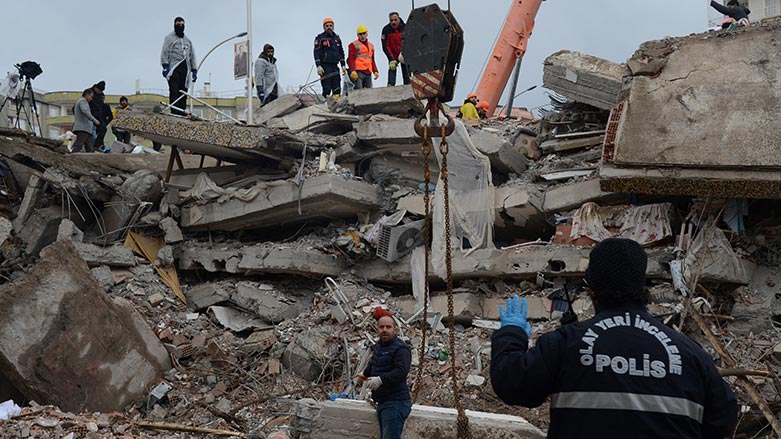Key developments in the aftermath of Turkey, Syria quakes

ANTAKYA, Turkey (AP) — The earthquakes that killed more than 39,000 people in southern Turkey and northern Syria produced more grieving and suffering along with extraordinary rescues and appeals for aid.
Here's a look at key developments Wednesday from the aftermath of the earthquakes:
DEFYING ODDS AFTER NINE DAYS
A search-and-rescue team in southern Turkey's Kahramanmaras province extricated a 42-year-old woman from the shattered remains of a building a full 222 hours after the first 7.8 magnitude earthquake struck in the early hours of Feb. 6.
Video published by Turkey’s state-run Anadolu news agency showed rescuers lifting the survivor, Melike Imamoglu, out of a crease in the towering debris. When the stretcher was loaded into an ambulance, a large group of rescuers burst into applause.
A woman and two children also were pulled alive from rubble six hours later in Antakya, the capital of southern Turkey's Hatay province, Anadolu Agency reported.
The rescues were exceptions to the grim work of locating the bodies of the remaining dead. The first earthquake and a 7.5 magnitude quake nine hours later destroyed thousands of buildings. Survivors and building experts have said shoddy construction contributed to the massive death toll.
ANKARA EXPRESSES GRATITUDE
Turkey’s foreign minister thanked the international community Wednesday for its support following last week's earthquakes.
Foreign Minister Mevlut Cavusoglu said 76 countries sent search and rescue teams to help Turkish personnel comb through collapsed buildings. Twelve of the foreign teams have returned home after completing their missions, he said.
“Of course, everything isn’t perfect. There were shortcoming, shortcomings in coordination in the beginning, but in a short time, the system was established,” Cavusoglu said of the emergency response.
The minister said 36,000 tents had arrived in Turkey from abroad to help shelter the tens of thousands of people left homeless and that another 51,000 were en route along with shipping containers that Qatar used to house soccer fans during last year's World Cup tournament.
Cavusoglu said his government also was working to ensure “urgent housing needs” were met with the local production of tents and containers that would be used for temporary shelter.
SUFFERING IN SYRIA
Along with the more than 35,000 people killed in Turkey, nearly 3,700 deaths were confirmed across the border in war-torn Syria, where the quakes multiplied the suffering of residents who had endured 12 years of civil war.
The president of the International Committee of the Red Cross, Mirjana Spoljaric, said in a statement after visiting to Syria that “communities already devastated by the years of conflict are now being pushed beyond their limits.” She emphasized an immediate need for clean water.
While rescue teams from around the world went to help in Turkey, aid relief for Syria was slowed by demolished roads and by the tensions between rebel-held areas of the country and those controlled by the government of Syrian President Bashar Assad.
The United Nations launched a $397 million appeal Tuesday to provide aid for nearly 5 million Syrians for the coming three months. That was a day after the global body announced a deal with Damascus to deliver U.N. aid through two more border crossings from Turkey to rebel-held areas of northwest Syria.
The needs on the ground remained daunting, with fiercely cold weather adding to the misery.
CRACKS AND AFTERSHOCKS
Orhan Tatar, general director of earthquake and risk reduction at Turkey’s disaster management authority, said that the earthquakes had produced a shift of about 7.3 meters in the ground and a massive crack of about 400 kilometers.
The two earthquakes took place on five faults and were followed by some 3,900 aftershocks, Tatar said, calling the number a “very serious” and “unusual” amount. The aftershocks have meant people in the affected areas could feel significant shaking every 15 minutes, the official said.
Tatar said billions of cubic meters of rubble would have to be removed. He also warned that heavy snow in some rural areas was creating a risk of avalanches.
